ART NEWS:Oct.04
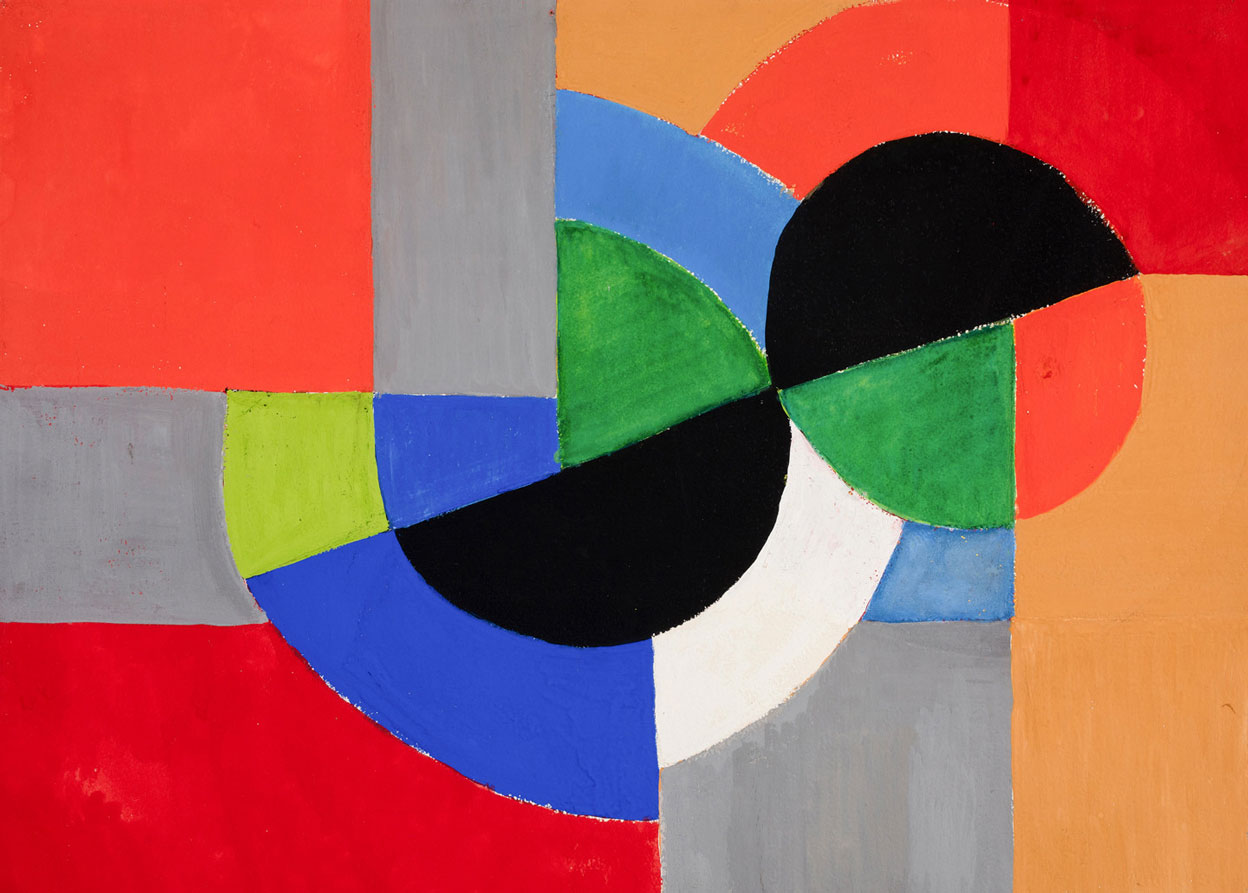 The exhibition “Migration: Traces in an Art Collection” engages a range of artistic expressions of the migrant experience, while examining the museum itself as a site of knowledge production. The exhibition gathers around 100 artworks, spanning more than a century of migration history. The exhibition began with an extraordinary turn of events at the museum in the spring of 1945. At the close of the WWII, refugees from the Nazi concentration camps arrived in “White Buses” operated by the Swedish Red Cross. With public facilities quickly reaching capacity, director Ernst Fischer decided overnight to transform the museum into a refugee shelter. Another group of works illustrates the relationship between Sweden and the Baltic region during the buildup to the Second World War and the period immediately following. In 1939, Malmö Museum received a private donation slated for the establishment of a Latvian collection. Seven months later, the Soviet Army occupied Latvia, and many of the country’s artists fled to Sweden. In 1947, when the museum acquired additional works for the Latvian collection, many of them were associated with these émigré artists. A third group of works sheds light on the increasing political consciousness and global engagement that was burgeoning in much of the art world during the 1960s and ’70s. This group includes works by artists who have firsthand experience of migration but do not explicitly depict it in their works. It also presents a number of contemporary works that comment on the perception of migration and displacement in a globalised world – one of the most burning issues of our time. Info: Curators: Maria Lind and Cecilia Widenheim, Malmö Konstmuseum, Malmöhusvägen 6, Malmö, Duration: 11/10/19-23/2/20, Days & Hours: Daily 10:00-17:00, https://malmo.se
The exhibition “Migration: Traces in an Art Collection” engages a range of artistic expressions of the migrant experience, while examining the museum itself as a site of knowledge production. The exhibition gathers around 100 artworks, spanning more than a century of migration history. The exhibition began with an extraordinary turn of events at the museum in the spring of 1945. At the close of the WWII, refugees from the Nazi concentration camps arrived in “White Buses” operated by the Swedish Red Cross. With public facilities quickly reaching capacity, director Ernst Fischer decided overnight to transform the museum into a refugee shelter. Another group of works illustrates the relationship between Sweden and the Baltic region during the buildup to the Second World War and the period immediately following. In 1939, Malmö Museum received a private donation slated for the establishment of a Latvian collection. Seven months later, the Soviet Army occupied Latvia, and many of the country’s artists fled to Sweden. In 1947, when the museum acquired additional works for the Latvian collection, many of them were associated with these émigré artists. A third group of works sheds light on the increasing political consciousness and global engagement that was burgeoning in much of the art world during the 1960s and ’70s. This group includes works by artists who have firsthand experience of migration but do not explicitly depict it in their works. It also presents a number of contemporary works that comment on the perception of migration and displacement in a globalised world – one of the most burning issues of our time. Info: Curators: Maria Lind and Cecilia Widenheim, Malmö Konstmuseum, Malmöhusvägen 6, Malmö, Duration: 11/10/19-23/2/20, Days & Hours: Daily 10:00-17:00, https://malmo.se
![]() The exhibition “Guido Casaretto. The Ghosts of Matter” is the latest in a series of individual presentations by artists whose works are featured in the MOCAK Collection. Guido Casaretto’s life and work incorporate many cultures. He was born in 1981 in Turkey, grew up in Greece and Italy, and now lives in Istanbul. His remote ancestors left Italy for Asia Minor during the Ottoman Empire. But they never assimilated – they became part of a community known as Levantine, made up of Christian immigrants from France, Italy and EnglandHe distances himself from the influence of any culture on his work, although one can occasionally find in it references to Italian art and tradition. Guido Casaretto is interested in natural matter, he also investigates processed matter, analysing the characteristics of furniture and ceilings. The corollary of such pursuit is his interest in the ‘human matter’. In respect of primary materials he uses traditional techniques, incorporating the experience of painters, sculptures and craftsmen. With manmade objects, his methods are more. The strangest is the technique that the artist has employed in relation to human beings. On the internet he has found universal models of the human figures, produced for use in computer animations. Info: Curator: Curator: Agnieszka Sachar, MOCAK (Museum of Contemporary Art in Krakow), 4 Lipowa Street, Krakow, Duration: 25/10/19-22/3/20, Days & Hours: Tue-Sun 11:00-19:00, https://en.mocak.pl
The exhibition “Guido Casaretto. The Ghosts of Matter” is the latest in a series of individual presentations by artists whose works are featured in the MOCAK Collection. Guido Casaretto’s life and work incorporate many cultures. He was born in 1981 in Turkey, grew up in Greece and Italy, and now lives in Istanbul. His remote ancestors left Italy for Asia Minor during the Ottoman Empire. But they never assimilated – they became part of a community known as Levantine, made up of Christian immigrants from France, Italy and EnglandHe distances himself from the influence of any culture on his work, although one can occasionally find in it references to Italian art and tradition. Guido Casaretto is interested in natural matter, he also investigates processed matter, analysing the characteristics of furniture and ceilings. The corollary of such pursuit is his interest in the ‘human matter’. In respect of primary materials he uses traditional techniques, incorporating the experience of painters, sculptures and craftsmen. With manmade objects, his methods are more. The strangest is the technique that the artist has employed in relation to human beings. On the internet he has found universal models of the human figures, produced for use in computer animations. Info: Curator: Curator: Agnieszka Sachar, MOCAK (Museum of Contemporary Art in Krakow), 4 Lipowa Street, Krakow, Duration: 25/10/19-22/3/20, Days & Hours: Tue-Sun 11:00-19:00, https://en.mocak.pl
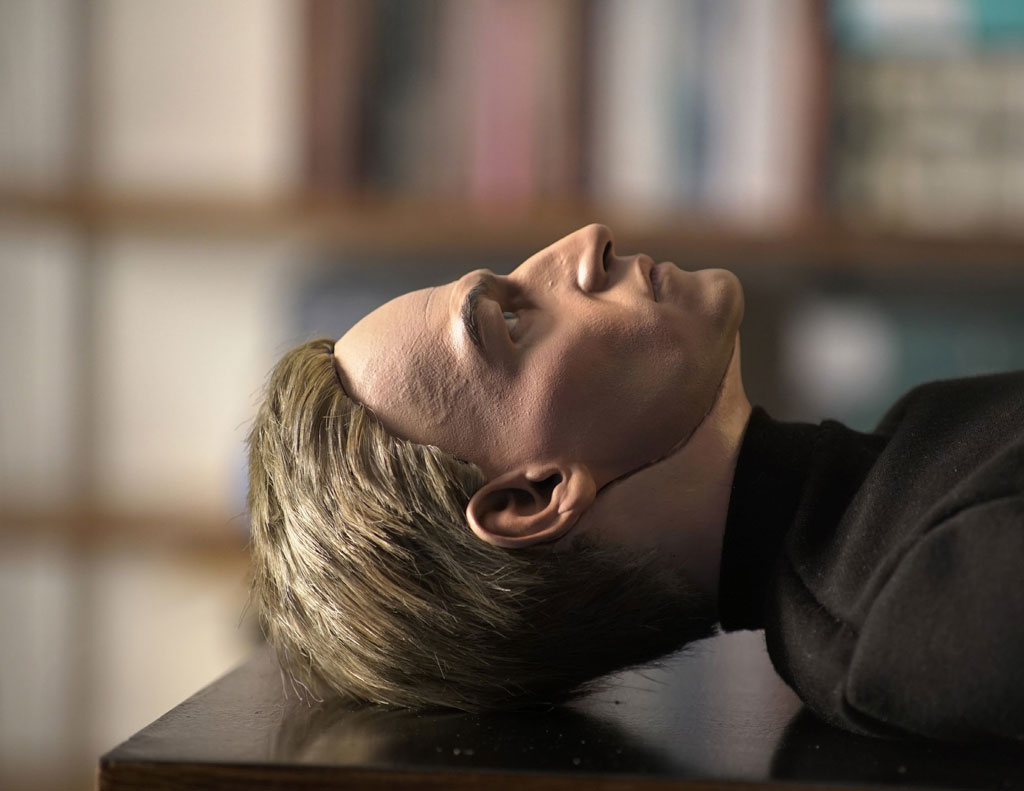 Cécile B. Evans presents at Frac Lorraine her architectural & video installation serie named “AMOS’ WORLD” (2017-18). In her work, Cécile B. Evans examines the significance and role of emotion in contemporary societies as well as the increasing influence of new technologies on our feelings and actions. For her solo show at mumok, Evans created an architectural video installation. AMOS’ WORLD is conceived as a television show set in a socially progressive housing estate. The exhibition, divided into episodes, follows an architect called Amos and the inhabitants of the housing estate. Viewers are first introduced to Amos and some of the tenants, each individual interwoven into the larger infrastructure of Amos’ building. His comfortable perch takes a turn when his perfect individual-communal fantasy for the Capitalist age begins to crumble as the tenants fail to conform to the behaviours he had envisaged. Fissures in this carefully constructed network reveal a breakdown of person-to-person and person-to-infrastructure power dynamics. Seemingly free from the pressures of an outside environment but with a visibly constricted view. Info: 49 Nord 6 Est Frac Lorraine, 1 bis, rue des Trinitaires, Metz, Duration: 25/10/19-26/1/20, Days & Hours: Tue-Fri 14:00-18:00, Sat-Sun 11:00-19:00, www.fraclorraine.org
Cécile B. Evans presents at Frac Lorraine her architectural & video installation serie named “AMOS’ WORLD” (2017-18). In her work, Cécile B. Evans examines the significance and role of emotion in contemporary societies as well as the increasing influence of new technologies on our feelings and actions. For her solo show at mumok, Evans created an architectural video installation. AMOS’ WORLD is conceived as a television show set in a socially progressive housing estate. The exhibition, divided into episodes, follows an architect called Amos and the inhabitants of the housing estate. Viewers are first introduced to Amos and some of the tenants, each individual interwoven into the larger infrastructure of Amos’ building. His comfortable perch takes a turn when his perfect individual-communal fantasy for the Capitalist age begins to crumble as the tenants fail to conform to the behaviours he had envisaged. Fissures in this carefully constructed network reveal a breakdown of person-to-person and person-to-infrastructure power dynamics. Seemingly free from the pressures of an outside environment but with a visibly constricted view. Info: 49 Nord 6 Est Frac Lorraine, 1 bis, rue des Trinitaires, Metz, Duration: 25/10/19-26/1/20, Days & Hours: Tue-Fri 14:00-18:00, Sat-Sun 11:00-19:00, www.fraclorraine.org
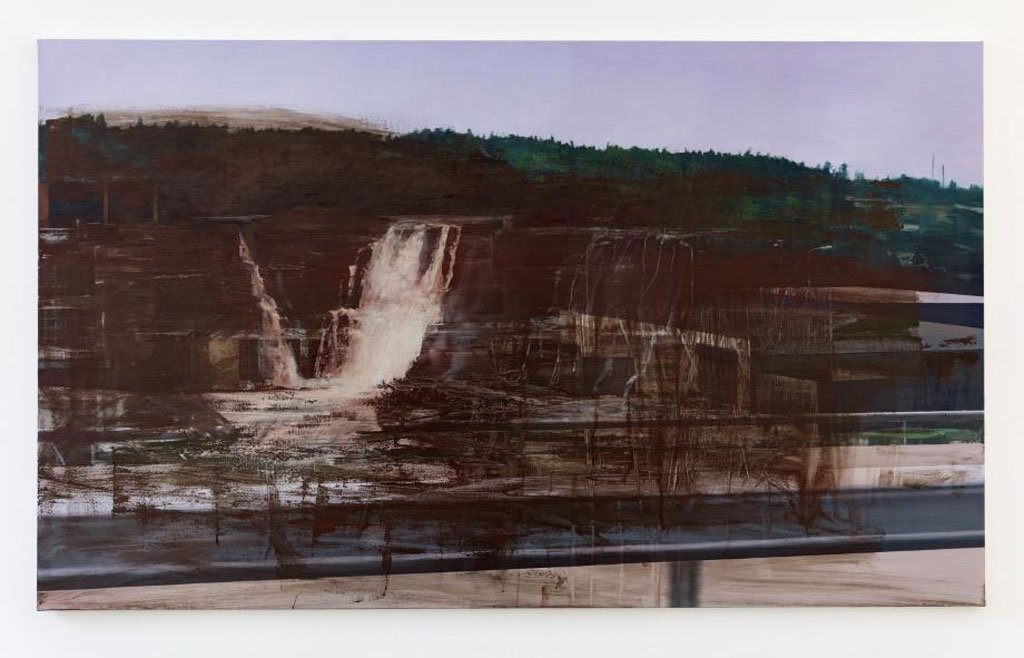 Tommy Hilding’s paintings in the exhibition “Revisited” at Galleri Magnus Karlsson, invites us to travel in time, from today’s urban world to the dramatic landscape depictions of romanticism. Already in his last exhibition at the gallery, “Escapeland” (2016), Tommy Hilding began to incorporate fragments from 19th century paintings in his imagery. His interest in this time period has been known for a long time, although the connection to his own work has not been evident. Hilding’s works have been in the epicenter of a contemporary reality with anonymous concrete cities, misanthropic social structures and depictions of human vulnerability. A world that probably can be seen as a counterpoint to romantic landscape paintings. In the new paintings, Hilding effectively brings togehter the extremes, but also points out similarities. In the news we see overwhelming bodies of water that bring down houses, cars and people in shocking pictures. Dramatic film sequences of events difficult to grasp. Effects of humanity’s influence on landscapes, topography and weather systems. Info: Galleri Magnus Karlsson, Fredsgatan 12, Stockholm, Duration: 26/10-14/12/19, Days & Hours: Tue-Fri 12:00-17:00, Sat 12:00-16:00, www.gallerimagnuskarlsson.com
Tommy Hilding’s paintings in the exhibition “Revisited” at Galleri Magnus Karlsson, invites us to travel in time, from today’s urban world to the dramatic landscape depictions of romanticism. Already in his last exhibition at the gallery, “Escapeland” (2016), Tommy Hilding began to incorporate fragments from 19th century paintings in his imagery. His interest in this time period has been known for a long time, although the connection to his own work has not been evident. Hilding’s works have been in the epicenter of a contemporary reality with anonymous concrete cities, misanthropic social structures and depictions of human vulnerability. A world that probably can be seen as a counterpoint to romantic landscape paintings. In the new paintings, Hilding effectively brings togehter the extremes, but also points out similarities. In the news we see overwhelming bodies of water that bring down houses, cars and people in shocking pictures. Dramatic film sequences of events difficult to grasp. Effects of humanity’s influence on landscapes, topography and weather systems. Info: Galleri Magnus Karlsson, Fredsgatan 12, Stockholm, Duration: 26/10-14/12/19, Days & Hours: Tue-Fri 12:00-17:00, Sat 12:00-16:00, www.gallerimagnuskarlsson.com
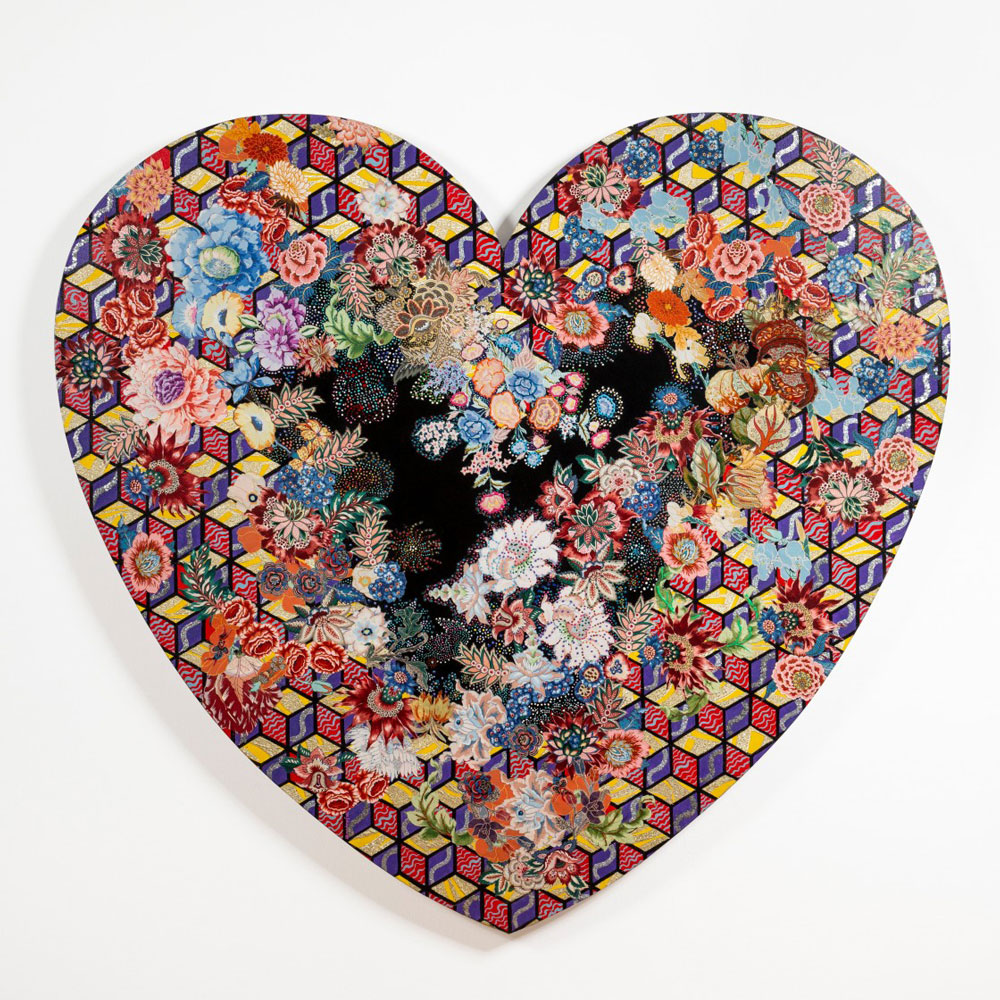 “With Pleasure: Pattern and Decoration in American Art 1972-1985” is the first full-scale scholarly survey of this groundbreaking American art movement, encompassing works in painting, sculpture, collage, ceramics, installation art, and performance documentation. Covering the years 1972 to 1985 and featuring approximately fifty artists from across the United States, the exhibition examines the Pattern and Decoration movement’s defiant embrace of forms traditionally coded as feminine, domestic, ornamental, or craft-based and thought to be categorically inferior to fine art. Pattern and Decoration artists gleaned motifs, color schemes, and materials from the decorative arts, freely appropriating floral, arabesque, and patchwork patterns and arranging them in intricate, almost dizzying, and sometimes purposefully gaudy designs. Their work across mediums pointedly evokes a pluralistic array of sources from Islamic architectural ornamentation to American quilts, wallpaper, Persian carpets, and domestic embroidery. This exhibition traces the movement’s broad reach in postwar American art by including artists widely regarded as comprising the core of the movement, such as Valerie Jaudon, Joyce Kozloff, Robert Kushner, Kim MacConnel, and Miriam Schapiro; artists whose contributions to Pattern and Decoration have been underrecognized, such as Merion Estes, Dee Shapiro, Kendall Shaw, and Takako Yamaguchi; as well as artists who are not normally considered in the context of Pattern and Decoration, such as Emma Amos, Billy Al Bengston, Al Loving, and Betty Woodman. Info: MOCA Grand Avenue, 250 South Grand Avenue, Los Angeles, Duration: 27/10/19-11/5/20, Days & Hours: Mon, Wed & Fri 10:00-18:00, Thu 11:00-20:00, Sat-Sun 11:00-17:00, www.moca.org
“With Pleasure: Pattern and Decoration in American Art 1972-1985” is the first full-scale scholarly survey of this groundbreaking American art movement, encompassing works in painting, sculpture, collage, ceramics, installation art, and performance documentation. Covering the years 1972 to 1985 and featuring approximately fifty artists from across the United States, the exhibition examines the Pattern and Decoration movement’s defiant embrace of forms traditionally coded as feminine, domestic, ornamental, or craft-based and thought to be categorically inferior to fine art. Pattern and Decoration artists gleaned motifs, color schemes, and materials from the decorative arts, freely appropriating floral, arabesque, and patchwork patterns and arranging them in intricate, almost dizzying, and sometimes purposefully gaudy designs. Their work across mediums pointedly evokes a pluralistic array of sources from Islamic architectural ornamentation to American quilts, wallpaper, Persian carpets, and domestic embroidery. This exhibition traces the movement’s broad reach in postwar American art by including artists widely regarded as comprising the core of the movement, such as Valerie Jaudon, Joyce Kozloff, Robert Kushner, Kim MacConnel, and Miriam Schapiro; artists whose contributions to Pattern and Decoration have been underrecognized, such as Merion Estes, Dee Shapiro, Kendall Shaw, and Takako Yamaguchi; as well as artists who are not normally considered in the context of Pattern and Decoration, such as Emma Amos, Billy Al Bengston, Al Loving, and Betty Woodman. Info: MOCA Grand Avenue, 250 South Grand Avenue, Los Angeles, Duration: 27/10/19-11/5/20, Days & Hours: Mon, Wed & Fri 10:00-18:00, Thu 11:00-20:00, Sat-Sun 11:00-17:00, www.moca.org
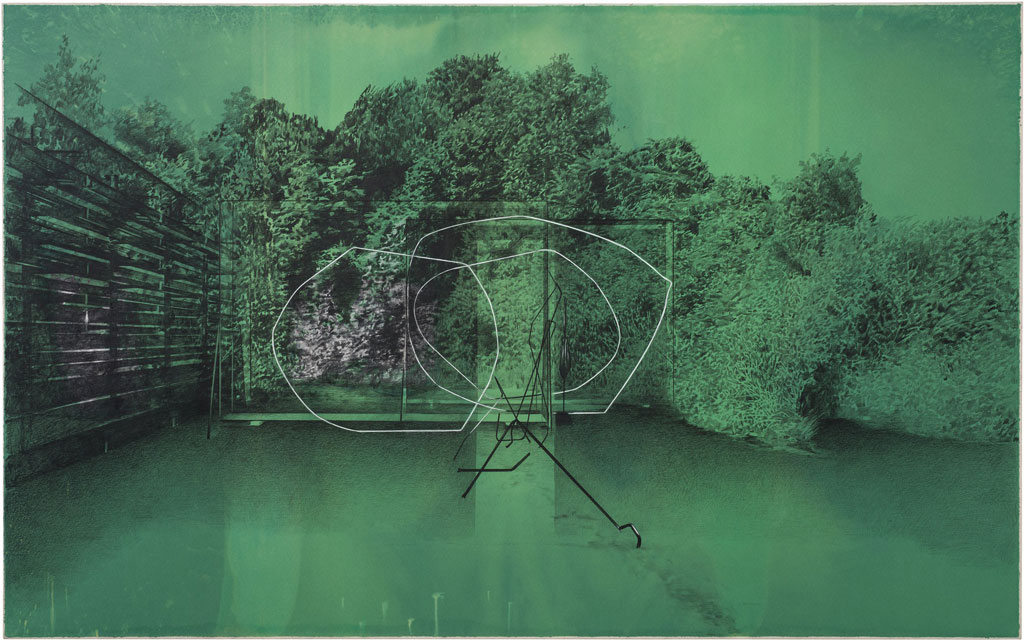 Tatiana Trouvé’s exhibition “On the Eve of Never Leaving” includes new drawings from two related series: “Les dessouvenus” (2013- ) and “The Great Atlas of Disorientation” (2019- ), installed in a metal armature that itself functions as a linear drawing through space. To make “Les dessouvenus” Trouvé first plunges large sheets of colored paper into bleach, then allows the unpredictable, even caustic, boundaries of each stain to provide a loose structure for complex “environmental dramas” that she draws in pencil. In “The Great Atlas of Disorientation” she uses watercolor to recreate the bleached effects in the series, which variously recall smoke, halos, ghosts, or mushroom clouds. The slight differences between the real and contrived stains cause Trouvé’s responsive drawings to take off in new directions, as she pulls from a wide range of sources including her personal archive of tree photographs, vintage x-rays, her own previous sculptures, and works by artists she admires, such as American sculptor Beverly Buchanan. “The Great Atlas of Disorientation” series thus underscores the impossibility of replicating a succession of chance events. Info: Gagosian Gallery, 456 North Camden Drive, Beverly Hills, Duration: 1/11/19-11/1/20, Days & Hours: Mon-Sat 11:00-18:00, https://gagosian.com
Tatiana Trouvé’s exhibition “On the Eve of Never Leaving” includes new drawings from two related series: “Les dessouvenus” (2013- ) and “The Great Atlas of Disorientation” (2019- ), installed in a metal armature that itself functions as a linear drawing through space. To make “Les dessouvenus” Trouvé first plunges large sheets of colored paper into bleach, then allows the unpredictable, even caustic, boundaries of each stain to provide a loose structure for complex “environmental dramas” that she draws in pencil. In “The Great Atlas of Disorientation” she uses watercolor to recreate the bleached effects in the series, which variously recall smoke, halos, ghosts, or mushroom clouds. The slight differences between the real and contrived stains cause Trouvé’s responsive drawings to take off in new directions, as she pulls from a wide range of sources including her personal archive of tree photographs, vintage x-rays, her own previous sculptures, and works by artists she admires, such as American sculptor Beverly Buchanan. “The Great Atlas of Disorientation” series thus underscores the impossibility of replicating a succession of chance events. Info: Gagosian Gallery, 456 North Camden Drive, Beverly Hills, Duration: 1/11/19-11/1/20, Days & Hours: Mon-Sat 11:00-18:00, https://gagosian.com
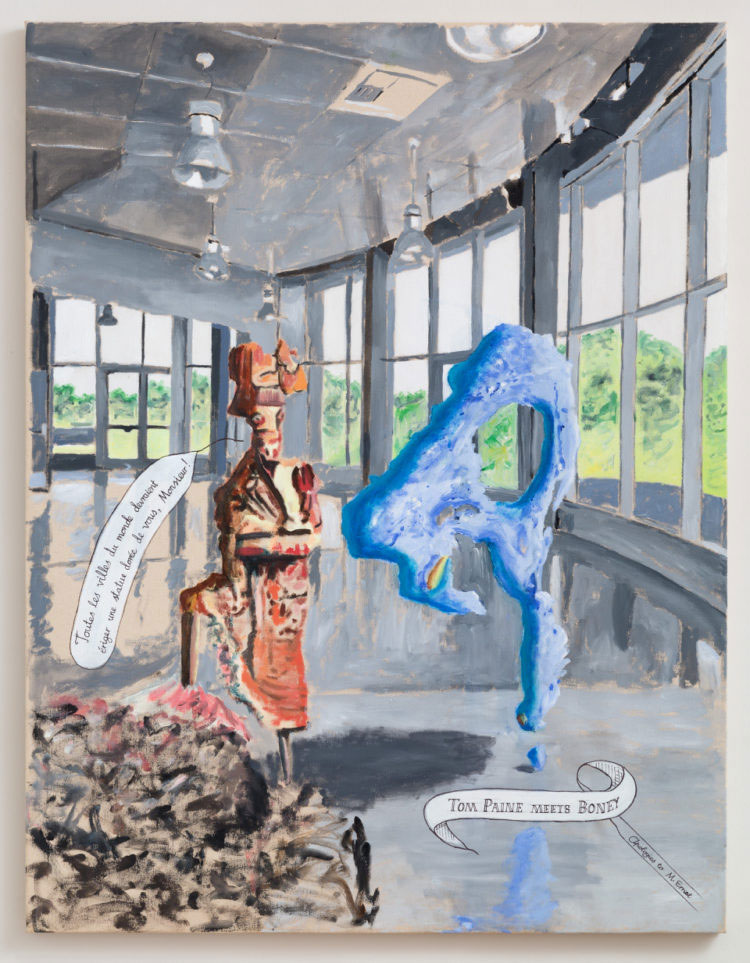 Alun Williams is known for use of carefully researched, found abstract paint marks as portraits of historical characters. His new paintings in his solo exhibition “In the Footsteps of Mr. Paine” are a celebration of Thomas Paine, the British political theorist and philosopher who was a pioneer of democracy and equality, having an enormous influence on both American and French Revolutions. He was also a pioneer of innovation in spreading information – very much a precursor of recent politicians realising the potential of social media. relation to 18th century populations. Williams’ methodic way of painting references a variety of painterly traditions, but his works always share a mark or stain in red, blue, yellow or grey, paint marks or accidental splashes or spillages that he finds in particular places. In the case of Thomas Paine, the traces of his symbolic presence remained elusive for longer than most of Williams’ subjects. The artist saw this as normal, paralleling numerous Paine scholars or fanatics who travelled extensively searching for the dispersed remains of the great man. An accidental and evocative paint mark was finally discovered on Paine’s doorstep in Lewes, the British town, where he first began political debate in earnest. Info: Galerie Anne Barrault, 51 rue des Archives, Paris, Duration: 6/11/19-21/12/19, Days & Hours: Tue-Sat 11:00-19:00, https://galerieannebarrault.com
Alun Williams is known for use of carefully researched, found abstract paint marks as portraits of historical characters. His new paintings in his solo exhibition “In the Footsteps of Mr. Paine” are a celebration of Thomas Paine, the British political theorist and philosopher who was a pioneer of democracy and equality, having an enormous influence on both American and French Revolutions. He was also a pioneer of innovation in spreading information – very much a precursor of recent politicians realising the potential of social media. relation to 18th century populations. Williams’ methodic way of painting references a variety of painterly traditions, but his works always share a mark or stain in red, blue, yellow or grey, paint marks or accidental splashes or spillages that he finds in particular places. In the case of Thomas Paine, the traces of his symbolic presence remained elusive for longer than most of Williams’ subjects. The artist saw this as normal, paralleling numerous Paine scholars or fanatics who travelled extensively searching for the dispersed remains of the great man. An accidental and evocative paint mark was finally discovered on Paine’s doorstep in Lewes, the British town, where he first began political debate in earnest. Info: Galerie Anne Barrault, 51 rue des Archives, Paris, Duration: 6/11/19-21/12/19, Days & Hours: Tue-Sat 11:00-19:00, https://galerieannebarrault.com
 “Notations”, Günther Uecker’s solo exhibition in New York brings together new large-scale nail paintings with a selection of watercolors from series made by Uecker during his global travels over the past three decades. The exhibition is the first to juxtapose these disparate bodies of work, which together provide deeper insight into Uecker’s practice and the sociopolitical concerns that have informed his artistic efforts over the past 60 years. To create his signature nail paintings, Uecker stretches canvas over thick panels of wood; works a mixture of white paint and carpenter’s glue into a dense, visceral surface; then hammers nails into the panels, varying their placement, angle, and groupings intuitively to form undulating painted reliefs that cast shadows in constant motion. Unified by pictorial composition and material presence, the nails project out into the viewer’s space, suggesting forces of growth and movement, unity and disruption, order and entropy. A highlight of this new series is Weisser Schrei (White Scream), a painting Uecker describes as a self-portrait. Info: Lévy Gorvy Gallery, 909 Madison Avenue, New York, Duration: 7/11/19-15/2/20, Days & Hours: Mon-Sat 10:00-18:00, www.levygorvy.com
“Notations”, Günther Uecker’s solo exhibition in New York brings together new large-scale nail paintings with a selection of watercolors from series made by Uecker during his global travels over the past three decades. The exhibition is the first to juxtapose these disparate bodies of work, which together provide deeper insight into Uecker’s practice and the sociopolitical concerns that have informed his artistic efforts over the past 60 years. To create his signature nail paintings, Uecker stretches canvas over thick panels of wood; works a mixture of white paint and carpenter’s glue into a dense, visceral surface; then hammers nails into the panels, varying their placement, angle, and groupings intuitively to form undulating painted reliefs that cast shadows in constant motion. Unified by pictorial composition and material presence, the nails project out into the viewer’s space, suggesting forces of growth and movement, unity and disruption, order and entropy. A highlight of this new series is Weisser Schrei (White Scream), a painting Uecker describes as a self-portrait. Info: Lévy Gorvy Gallery, 909 Madison Avenue, New York, Duration: 7/11/19-15/2/20, Days & Hours: Mon-Sat 10:00-18:00, www.levygorvy.com
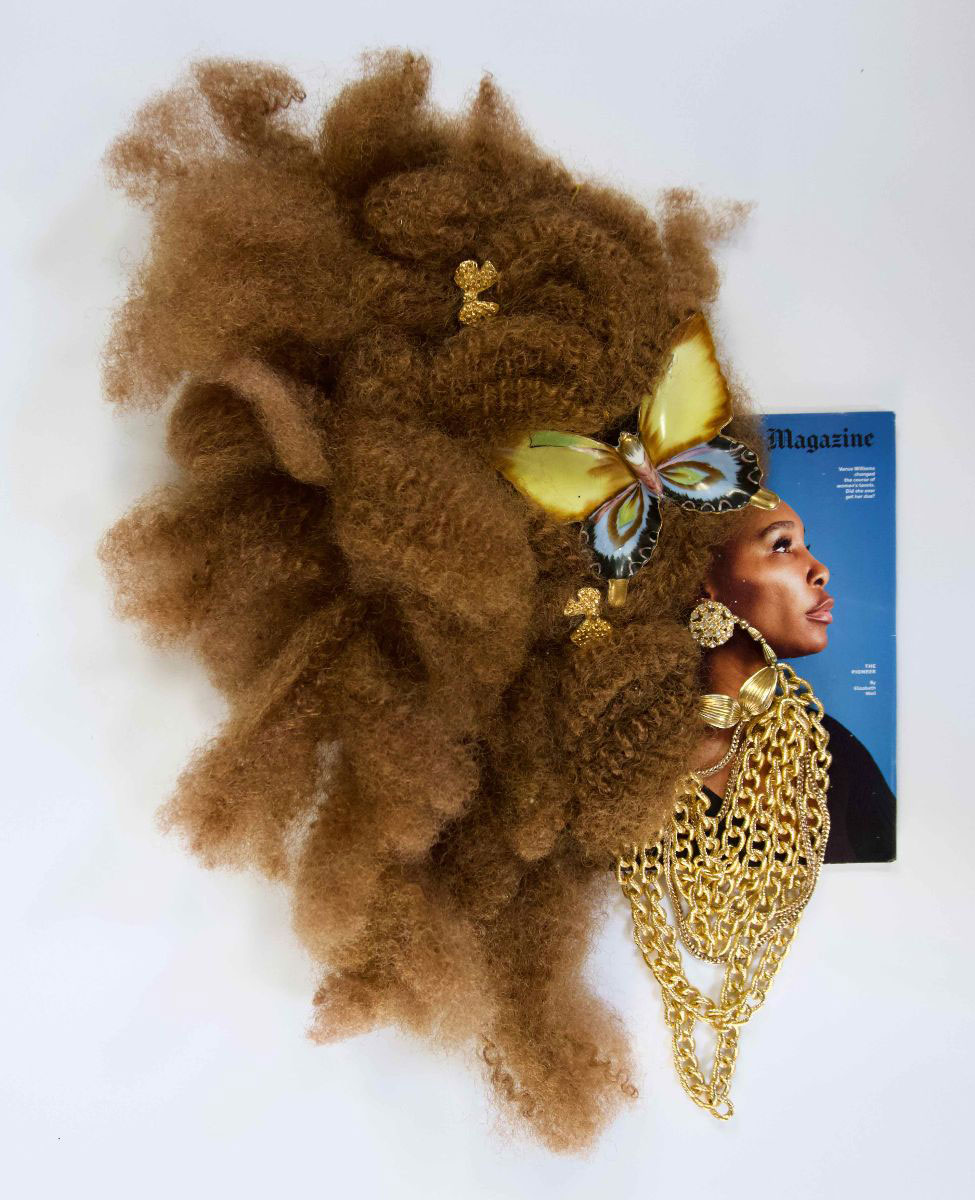 Vanessa German’s exhibition “TRAMPOLINE: Resilience & Black Body & Soul”, showcases her richly encrusted sculptures, which she refers to as power-figures, alongside a series of wall-mounted altars that each act as seers or protectors carrying with them the gift of their own human technology: joy, love, and protection for the souls of Black Americans. The work is made as an act of love in response to the daily injustices and violence committed against Black and Brown people, their bodies and their souls. In this newest body of work, German answers the call of Toni Morrison, who in 1993 at The Nobel Lecture in Literature invited all writers, and by extension all artists, to “make up a story… For our sake and yours forget your name in the street; tell us what the world has been to you in the dark places and in the light. Don’t tell us what to believe, what to fear. Show us belief’s wide skirt and the stitch that unravels fear’s caul”. Varying yet specific contours and diverse materiality of her work highlight the intricacies of how bodies are perceived and manipulated, emphasizing self-fortitude and protection. In a series of lavishly embellished collages, German pays homage to tennis legends Venus and Serena Williams by transforming them into Madonnas. Info: Fort Gansevoort, 5 Ninth Avenue, New York, Duration: 7/11-21/12/19, Days & Hours: Tue-Sat 10:00-18:00, www.fortgansevoort.com
Vanessa German’s exhibition “TRAMPOLINE: Resilience & Black Body & Soul”, showcases her richly encrusted sculptures, which she refers to as power-figures, alongside a series of wall-mounted altars that each act as seers or protectors carrying with them the gift of their own human technology: joy, love, and protection for the souls of Black Americans. The work is made as an act of love in response to the daily injustices and violence committed against Black and Brown people, their bodies and their souls. In this newest body of work, German answers the call of Toni Morrison, who in 1993 at The Nobel Lecture in Literature invited all writers, and by extension all artists, to “make up a story… For our sake and yours forget your name in the street; tell us what the world has been to you in the dark places and in the light. Don’t tell us what to believe, what to fear. Show us belief’s wide skirt and the stitch that unravels fear’s caul”. Varying yet specific contours and diverse materiality of her work highlight the intricacies of how bodies are perceived and manipulated, emphasizing self-fortitude and protection. In a series of lavishly embellished collages, German pays homage to tennis legends Venus and Serena Williams by transforming them into Madonnas. Info: Fort Gansevoort, 5 Ninth Avenue, New York, Duration: 7/11-21/12/19, Days & Hours: Tue-Sat 10:00-18:00, www.fortgansevoort.com
 Architect, designer, art director, writer, poet, critic and all-round artist, Gio Ponti has been the object of historical-critical literature and exhibition programmes that would be difficult to equal. 40 years on from his death, MAXXI is dedicating the major retrospective to “Amare l’architettura”, that studies and presents his versatility, starting out with an account of his architecture. From the styling of everyday objects to the invention of spatial configurations for the modern home through to the realisation of complex projects inserted within an urban context such as the Pirelli skyscraper in Milan or the cathedral in Taranto, Ponti’s design was characterised by his comfort in switching scales. The exhibition presents almost 35 Ponti’s projects, illustrated by archive materials, drawings, models, photographs, documents, books, magazine and objects that permit the discovery of a remarkable protagonist of Italian architecture who left an indelible mark on diverse continents. Magazines of Ponti’s editorial activity and few design objects (such as the “Superleggera” chair produced by Cassina) strictly linked to architectural projects are also on show. Info: Curators: Maristella Casciato, Fulvio Irace with Margherita Guccione, Salvatore Licitra, Francesca Zanella, MAXXI, the National Museum of 21st Century Arts, Via Guido Reni 4/a, Rome, Duration: 27/11-19-13/4/20, Days & Hours: Tue & Fri-Sat 11:00-20:00, Wed-Thu & sun 11:00-19:00, www.maxxi.art
Architect, designer, art director, writer, poet, critic and all-round artist, Gio Ponti has been the object of historical-critical literature and exhibition programmes that would be difficult to equal. 40 years on from his death, MAXXI is dedicating the major retrospective to “Amare l’architettura”, that studies and presents his versatility, starting out with an account of his architecture. From the styling of everyday objects to the invention of spatial configurations for the modern home through to the realisation of complex projects inserted within an urban context such as the Pirelli skyscraper in Milan or the cathedral in Taranto, Ponti’s design was characterised by his comfort in switching scales. The exhibition presents almost 35 Ponti’s projects, illustrated by archive materials, drawings, models, photographs, documents, books, magazine and objects that permit the discovery of a remarkable protagonist of Italian architecture who left an indelible mark on diverse continents. Magazines of Ponti’s editorial activity and few design objects (such as the “Superleggera” chair produced by Cassina) strictly linked to architectural projects are also on show. Info: Curators: Maristella Casciato, Fulvio Irace with Margherita Guccione, Salvatore Licitra, Francesca Zanella, MAXXI, the National Museum of 21st Century Arts, Via Guido Reni 4/a, Rome, Duration: 27/11-19-13/4/20, Days & Hours: Tue & Fri-Sat 11:00-20:00, Wed-Thu & sun 11:00-19:00, www.maxxi.art
